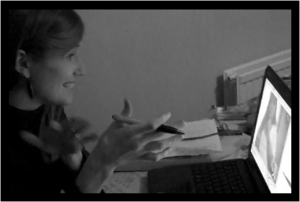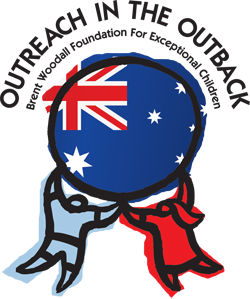Getting started with Outreach
 When Lucas’ mom, Kate, first found out about Outreach in the Outback she knew she’d have to make some changes to meet the technological needs for the program, but she also knew ABA could change everything for her family. ABA services are rare in Australia and the programs that are available are often not only difficult to access but too expensive for many families to afford. Still, Kate was motivated by the success stories she’d heard and knew ABA is the only therapeutic method proven to be successful for children with Autism. As a single mom, she’d even considered selling her home in order to access the expensive ABA therapy she knew her son needed. So, discovering a program that would teach and consistently guide her to do this therapy with Lucas herself meant her five year old son had a chance at the ABA therapy she longed to provide for him. From the very beginning, Kate was willing to invest everything she could into the program. She knew Outreach in the Outback would be worth it and she was right.
When Lucas’ mom, Kate, first found out about Outreach in the Outback she knew she’d have to make some changes to meet the technological needs for the program, but she also knew ABA could change everything for her family. ABA services are rare in Australia and the programs that are available are often not only difficult to access but too expensive for many families to afford. Still, Kate was motivated by the success stories she’d heard and knew ABA is the only therapeutic method proven to be successful for children with Autism. As a single mom, she’d even considered selling her home in order to access the expensive ABA therapy she knew her son needed. So, discovering a program that would teach and consistently guide her to do this therapy with Lucas herself meant her five year old son had a chance at the ABA therapy she longed to provide for him. From the very beginning, Kate was willing to invest everything she could into the program. She knew Outreach in the Outback would be worth it and she was right.
Lucas and his mom have been meeting with their Woodallkids Remote Consultant weekly since November 2012. The basic behavioral techniques she is learning help her not only to successfully teach Lucas throughout their day, but also to decrease his aggressive tantrums and increase his communication skills. But learning these principles has not only taught Mom how to have Lucas sit down with her at a table to work on his individual cognitive and behavioral goals; these methods are now a part of their every-day life and Lucas isn’t the only one benefiting.
 Kate is now an empowered parent. Over Christmas break, with only a few tips from her Woodallkids Consultant, Kate potty trained Lucas and quickly transferred his reinforcement system to a sticker chart. She then decided to involve his sister in a similar system for her positive behaviors as well. Picking out stickers and celebrating filled charts is now a family activity for them. Lucas’ daily therapy time is also transforming into family time as Mom learns to intentionally involve Lucas’ twin sister in his learning. Whether their practicing his programs while at home, while riding in the car, or during swim lessons, his sister is learning how to model actions and language for Lucas, how to prompt him to be more independent, and most importantly, how to connect with her brother in a new way that simply was not possible before.
Kate is now an empowered parent. Over Christmas break, with only a few tips from her Woodallkids Consultant, Kate potty trained Lucas and quickly transferred his reinforcement system to a sticker chart. She then decided to involve his sister in a similar system for her positive behaviors as well. Picking out stickers and celebrating filled charts is now a family activity for them. Lucas’ daily therapy time is also transforming into family time as Mom learns to intentionally involve Lucas’ twin sister in his learning. Whether their practicing his programs while at home, while riding in the car, or during swim lessons, his sister is learning how to model actions and language for Lucas, how to prompt him to be more independent, and most importantly, how to connect with her brother in a new way that simply was not possible before.

